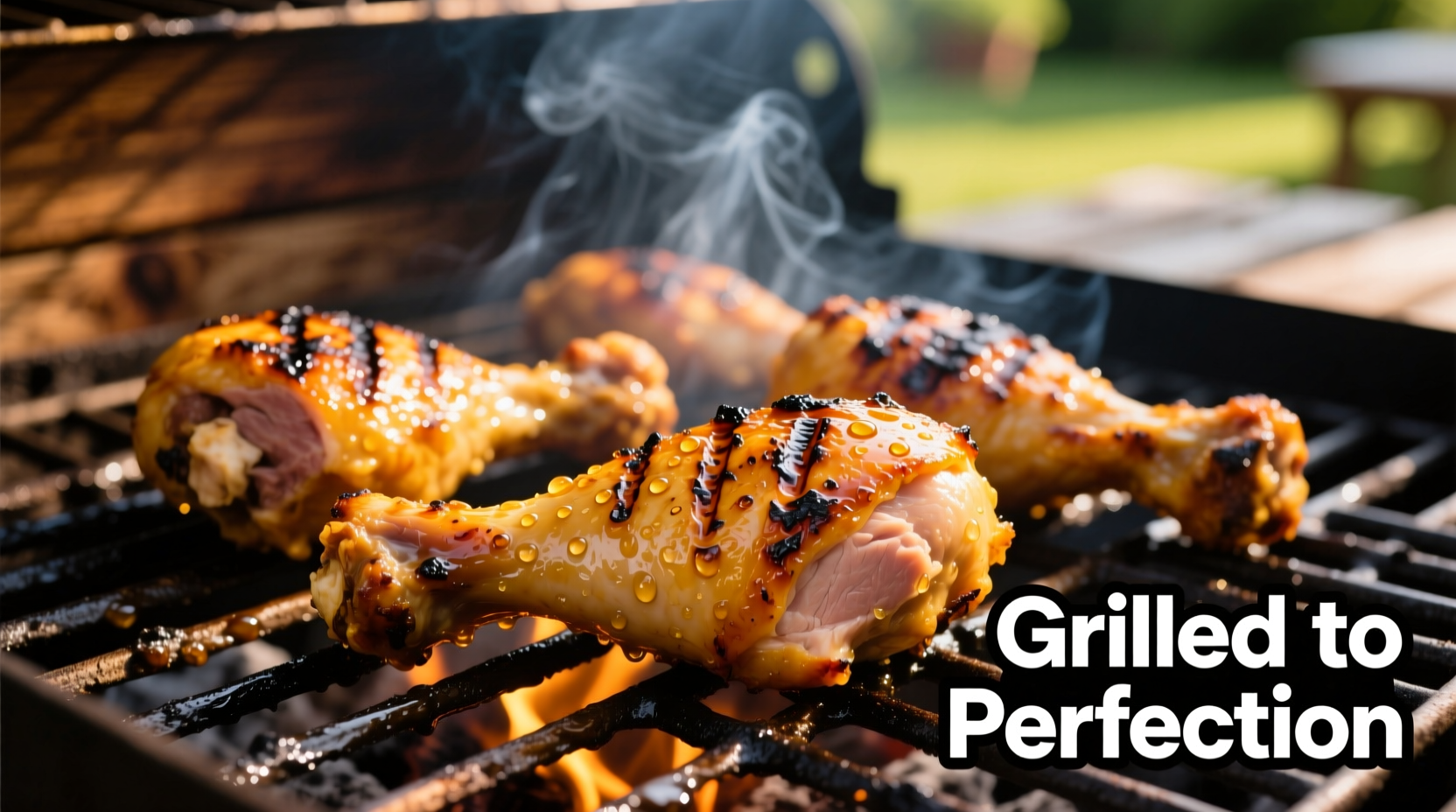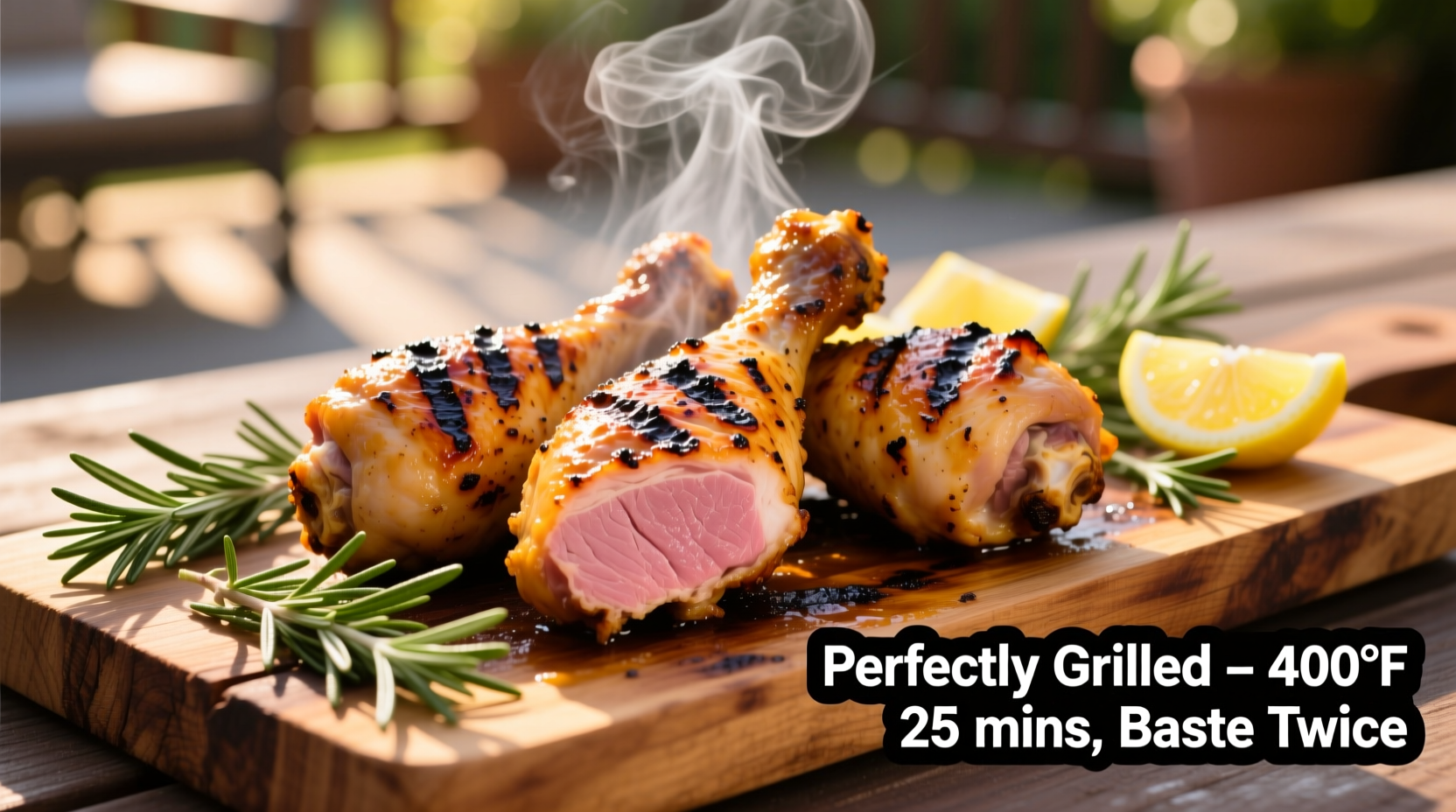Perfectly grilled chicken drumsticks require 35-45 minutes over medium heat (350-375°F) with indirect grilling for the first 25 minutes, then direct heat for crisp skin. Always cook to 165°F internal temperature for food safety. Marinate for at least 2 hours for maximum flavor penetration.
The Ultimate Guide to Grilling Juicy Chicken Drumsticks
Grilled chicken drumsticks offer that perfect combination of crispy skin and succulent meat that makes them a backyard barbecue favorite. Unlike breast meat, drumsticks contain more fat and connective tissue, forgiving minor timing errors while developing incredible flavor over the fire. Let's break down exactly how to achieve restaurant-quality results at home.Why Drumsticks Shine on the Grill
Drumsticks are often overlooked for more popular cuts, but they're actually ideal for grilling. The dark meat stays moist during cooking, the bone adds flavor, and the skin crisps beautifully over indirect heat. According to the USDA Food Safety and Inspection Service, dark meat like drumsticks contains more myoglobin (the protein that carries oxygen in muscle), which contributes to both their richer flavor and greater cooking forgiveness compared to white meat cuts.[1]Your Drumstick Preparation Checklist
Selection Matters Choose drumsticks with firm, plump meat and smooth skin without discoloration. Organic or air-chilled options often yield better texture as they retain more natural moisture. Avoid packages with excessive liquid, which indicates the meat has been previously frozen and thawed. Thawing Protocol For food safety, thaw frozen drumsticks in the refrigerator for 24-48 hours. Never thaw at room temperature. The Academy of Nutrition and Dietetics confirms that refrigerator thawing maintains temperatures below 40°F, preventing bacterial growth in the "danger zone."| Thawing Method | Time for 3 lbs | Safety Rating |
|---|---|---|
| Refrigerator | 24-48 hours | ★★★★★ |
| Cold Water Bath | 2-3 hours | ★★★☆☆ |
| Room Temperature | 1-2 hours | ★☆☆☆☆ |
Flavor Foundation: Marinades vs. Dry Rubs
Marinade Science Acidic marinades (with vinegar, citrus, or yogurt) should only contact chicken for 2-12 hours. Longer exposure breaks down proteins too much, resulting in mushy texture. For maximum flavor without texture compromise, combine acid with oil, herbs, and spices. A study published in the Journal of Food Science found that marinades penetrate chicken approximately 1/8 inch deep, making surface flavoring the primary mechanism.[2] Dry Rub Advantages Dry rubs create superior crust formation without moisture interference. Apply at least 1 hour before grilling (or up to 12 hours for deeper flavor penetration). The salt in rubs draws out surface moisture initially, then pulls flavors back in as it dissolves—a process called "dry brining."
Grill Setup: The Two-Zone Method
Gas Grill Configuration Turn on burners on one side only, creating direct heat on that zone and indirect heat on the other. Preheat to 350-375°F. Keep the lid closed as much as possible to maintain consistent temperature. Charcoal Grill Configuration Arrange coals on one side of the grill. For optimal temperature control, use the "minion method"—place 1/3 lit coals on the cooking side with 2/3 unlit coals on the indirect side. This creates steady, long-lasting heat.Step-by-Step Grilling Process
- Pat dry drumsticks thoroughly with paper towels—moisture is the enemy of crispy skin
- Apply oil lightly to skin (not the grill) to prevent sticking
- Place over indirect heat skin-side up for 25 minutes (lid closed)
- Flip and move to direct heat for 5-10 minutes per side until skin crisps
- Check temperature in thickest part, avoiding bone (must reach 165°F)
- Rest 5-10 minutes before serving to redistribute juices











 浙公网安备
33010002000092号
浙公网安备
33010002000092号 浙B2-20120091-4
浙B2-20120091-4